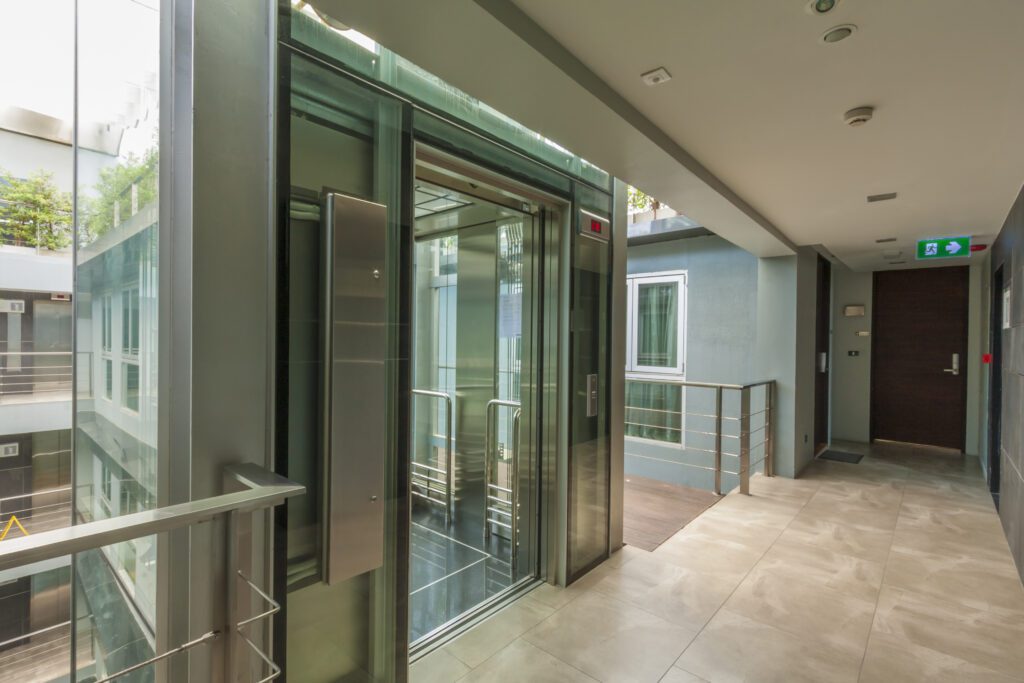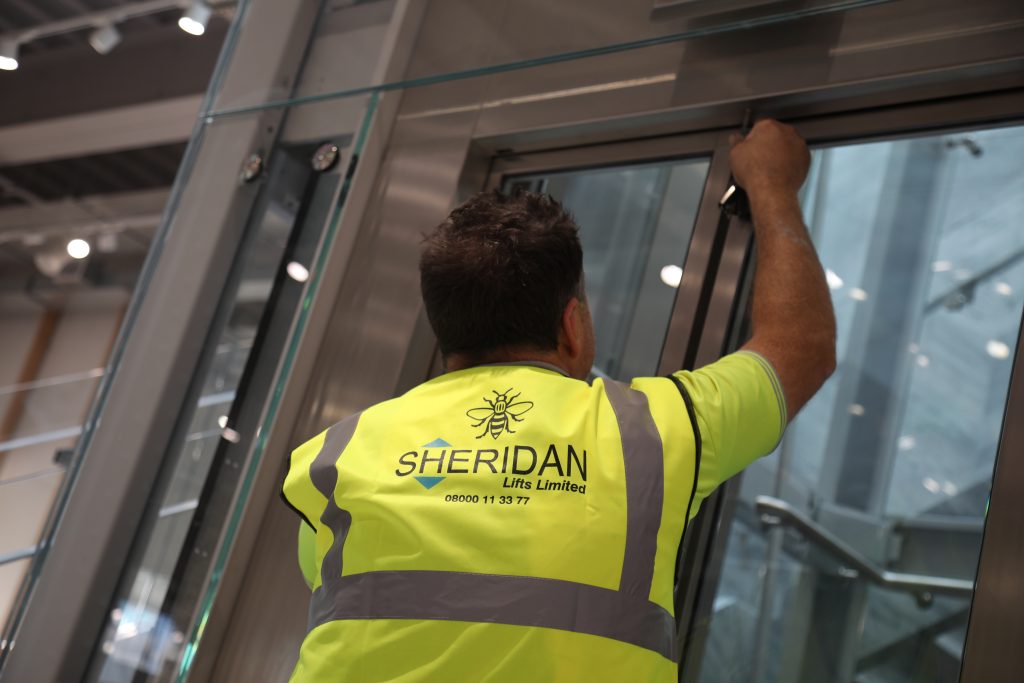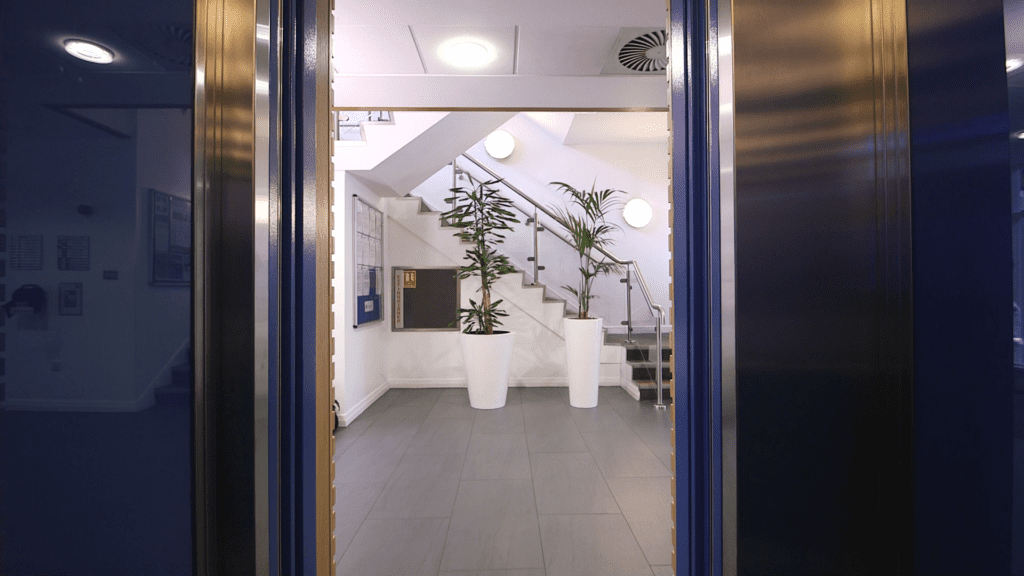As a project manager, there are several important factors to consider when installing a lift – energy efficiency, lift repairs and maintenance, aesthetics and more.
These factors are all incredibly important and determine the commercial function of your lift. After all, you don’t want a lift that’s unattractive to users, is too small for your customer’s needs, or is difficult to repair in the future.
In this comprehensive guide, bolstered by years of personal experience, we cover everything you need to know from lift installation to emergency lift repair! Learn about the factors to consider when installing a lift below.
Sheridan Lifts offers excellent lift installation and lift repair services of unbeatable quality. Get in touch to find out more and see how we can help you.

Building Design and Structural Considerations
The first step to a successful lift installation is taking into account varied building design and structural considerations:
- Are you in need of passenger elevators for a high-rise building, housing multiple offices? Or, is your building residential?
- Do you need access between floors or a lift that only travels a short distance?
- Which type of lift would best complement the structure and design of your building? Hydraulic elevators and machine-room-less elevators are installed in different ways, with varying levels of energy efficiency.
Some factors to consider thoroughly when managing a lift installation include:
Architectural Compatibility and Load Capacity
A lift with architectural compatibility means that it meshes seamlessly with a building’s current structure and interior design, and can be easily accessed for essential lift repairs. A project manager or building construction specialist can oversee the installation of a bespoke lift like this with little fuss, as long as some key considerations are kept in mind:
- Elevator Shaft – A building’s structural framework is inherently limited – without some major alterations, it can’t be made bigger or smaller than it already is! As a result, an elevator shaft should be designed with this pre-existing framework in mind, so it fits perfectly. Importantly, there must be enough room to accommodate the lift of your choosing – like a platform elevator or service lift – and comfortable space for the lift cabin to pass between floors.
- Door Configurations – Though they may look alike, no two elevator doors are the same. If you look even closer, you’ll notice that they don’t open the same way, either. Decide on whether your lift door will be centre-opening, side-opening or glass; this goes far in determining architectural compatibility with a building.
- Interior Fixtures and Finishes – The flooring, panelling, handrails and light fixtures of a lift should always complement the wider building. If your building, residential or commercial, is ultra-modern in design, the finish of your elevator should be too.
- External Elevator Design – For when elevators are externally installed, situated on the outside of a building, you don’t want the elevator to be obtrusive or an eyesore. If your building is glass, make the elevator glass, ensuring maximum visual integration.
However, load capacity is also an important structural consideration for a lift. Without adhering to the maximum weight that your lift can carry, lift repairs will become needed more frequently, and you may be putting your passengers at risk!
Determining what load capacity a lift needs
Fortunately, the appropriate load capacity can be determined based on a number of factors:
- Expected Passenger Traffic – If you need to install a lift for a bustling, tall, commercial building, you can expect a greater number of passengers and much heavier foot traffic. A passenger elevator with a higher load capacity would be advisable here. But, for residential projects, where high passenger traffic is rare, a lower load capacity would be just fine.
- The Building Function – Buildings have different functions. These individual functions have a direct impact on the elevator model, machinery and installation process. A hospital may transport patients between floors, requiring a high load capacity, and a residential apartment complex might need a lift strong enough to handle heavy furniture and frequent visitors.
- Overload Protection – A lift, even when weighed down to the max, shouldn’t exceed its load capacity – ever! This is when overload protection comes into play, an invaluable safety mechanism that also protects against emergency lift repairs. This feature automatically prevents the lift from operating if the safe load capacity is exceeded, preventing harm to passengers and the building.
- Future Changes – Particularly in existing builds, a building can be passed between owners over the course of many years, and its purpose can change several times! For new and old lifts alike, you have to consider the potential for future changes when gauging load capacity. Choose an elevator model with some freedom to accommodate future requirements, whatever they may be.
Seeking Professional Expertise
Skilled lift consultants and engineers can make a world of difference when it comes to effective lift installations. We at Sheridan Lifts know this better than anyone!
Design and installation expertise is truly make-or-break for a new lift project. Specialists can adapt to varying traffic patterns, load capacity needs and architectural constraints. Furthermore, the complexities of elevator machinery – electrics and wiring, the mechanical systems and safety features – require a knowledgeable hand to implement well.
Elevators are less dangerous than stairs, and most people have a higher chance of being struck by lightning than being caught in an elevator incident. But, this doesn’t mean lift installation safety should be breezed over. Consult with the expert team members at Sheridan Lifts for a bespoke lift you can rely on.

Ensuring Your Project Is Compliant and Safe
The apex of quality elevator installation, maintenance and lift repair is guaranteeing that – every step of the way – your initial project is compliant and safe. Here are some of the key considerations and regulations you need to be aware of to ensure this.
Which Regulations Do You Need To Comply With?
Across the UK, the installation of lifts is a heavily regulated industry – largely to maintain a low injury and death rate, but also to uphold the quality of building construction we have rightfully come to expect from contractors.
Some of the most important regulations to comply with include:
- Lifting Operations and Lifting Equipment Regulations 1998 (LOLER)
- Lifts Regulations 2016
- Provision and Use of Work Equipment Regulations (PUWER)
- Manual Handling Regulations
- The Building Regulations Approved Document M (Part M)
- Lift & Escalator Industry Association (LEIA)
- Disability Discrimination Act 1995 (DDA) and Equality Act 2010
- Health and Safety at Work Act 1974
Safety Considerations to be Aware of when Installing a New Lift
Safety features are at the heart of an elevator’s installation process for good reason. Whilst occasionally necessary, emergency lift repair is something to be avoided at all costs, and no one would like to see a ‘lift out of service’ sign en route to their office or apartment. As such, safety considerations to be aware of before and during lift installation include:
- Thorough Risk Assessment – Identifying the potential hazards of lift installation before it is carried out is essential. Then, these hazards are avoidable!
- Structural Integrity – Your lift should be structurally sound, adequately supported by the surrounding building, and never compromise the building’s structural stability.
- Electrical Safety – Always check that your electrical systems are properly grounded, circuits isolated, and adherent to all contemporary electrical codes.
- Emergency Features – Every lift should be fully equipped with an emergency alarm, intercom, emergency lighting and automatic rescue devices.
- Door Safety – Lift doors always have safety edges in place to prevent accidents, injuries and entrapment. This is a non-negotiable safety consideration.
- On-Site Training – We at Sheridan Lifts are proven experts in our field, but when our lift installation process ends, the on-site personnel left behind should undergo appropriate training to ensure a total understanding of the safe operation of the lift.
Energy Efficiency and Environmental Considerations
The Building Research Establishment Environmental Assessment Method, alternatively known as BREEAM, has outlined a key set of environmental regulations for property managers to consider during a project – all to boost energy efficiency and sustainability of their lifts!
- Energy Efficiency – Regenerative elevator drives, low-energy components and the use of a standby mode can boost the energy efficiency of an elevator.
- Sustainable Materials – Thousands of building materials are wastefully discarded each day. Consider implementing recycled or low-impact materials in the construction of your elevator, skyrocketing your sustainability.
- Accessibility – BREEAM considers accessibility as an important part of a building’s sustainability. All building occupants should be able to use an elevator with ease – this could involve the use of braille and space to accommodate wheelchair users.
How Lifts Can Help You Maximise Space and Improve Efficiency
Good lift design eliminates the need for an extensive network of staircases, opening up the potential for space-efficient floor plans in buildings, and providing more economically viable and usable properties in general.
The most space-saving elevators, though, are always bespoke. Bespoke lift services guarantee that a lift integrates perfectly into a space – blending into a building’s appearance, minimising daytime congestion and foot traffic, and keeping a building’s footprint sustainable without horizontal expansion.
Sheridan Lifts are well—renowned for our talent in bespoke lift projects of all kinds. Find out more about our ability to make your dream designs a reality, here.

Planning for Maintenance and Service
Lift regulations aren’t just for show. If they aren’t stringently adhered to, property owners could face legal repercussions – hefty fines and the closure of the lift included. This is why you must always remember to plan for regular lift maintenance and lift repairs, lest you risk trouble with the law. Legal penalties worsen if a lift is inaccessible, or poorly designed.
Schedule lift maintenance regularly with the aid of a professional, like Sheridan Lifts. Lift maintenance and repair tends to include a thorough safety inspection, parts replacement where necessary, and on-site training for safety purposes. Elevator manufacturers also provide extensive guides on how to maintain each elevator model, which we at Sheridan know like the back of our hand!
Lift Maintenance and Servicing with Sheridan Lifts
From architectural compatibility and overload protection to legal compliance and energy efficiency, this article has covered the many factors of lift installation and lift repairs, but also why these lift services should be of high quality.
For lift installation, maintenance and servicing that is trustworthy and offers exceptional quality lift services, contact Sheridan Lifts!